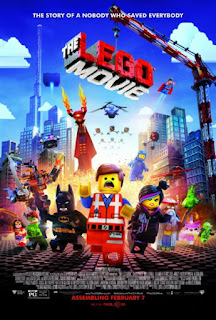Fig. 1 - Original Metropolis Movie Poster
Political, thought provoking, dramatic. There are many way to describe Fritz Lang’s ‘Metropolis’, and now newly discovered footage has been produced into a restored version of the cinematic masterpiece. With the original score by Gottfried Huppertz, it has certainly been noted that ‘Metropolis’ was the starting point for the science fiction genre within the film industry. This dramatic sci-fi adventure tells the tale of a city more extravagant than the mind can perceive, and that of it’s underling city, The Worker’s City, built vastly underneath the glimmering lights of ‘Metropolis’ itself. Lang’s vision has employed thousands of extras and payed a fortune for sets and special effects. For it’s time, it was one of the most expensive films ever made. Roger Ebert notes that “Lang’s film is the summit of German Expressionism, with its combination of stylized sets, dramatic camera angles, bold shadows and frankly artificial theatrics.” (Ebert, 2010).
As Simon Abrams describes in his review, “The city's subterranean slums, alluded to only as "The Depths," are a direct reflection of Fredersen's personal disdain for the plebs of von Harbou's future.” (Abrams, 2010). The film depicts a hierarchy of the classes, where the working class are beneath the wealthy. “This vision of plutocracy vs. labor would have been powerful in an era when the assembly line had been introduced on a large scale and Marx had encouraged class warfare.” states Roger Ebert (Ebert, 2010). What makes this so interesting is the fact that this subject is still somewhat relatable, that wealth and social status are an important aspect as to how you treat an individual.
Fig. 2 - Rotwang showing his robotic creation to Frederson
The futuristic setting begins with the production’s main character, Freder, son of the mastermind behind the city of ‘Metropolis’. Upon the meeting of an angelic figure named Maria, who appeared to be a caretaker of the worker’s children, Freder fell for her instantly. As she disappeared, he attempted to pursuer her, only to find himself within the working quarters that were hidden away from the Eden like gardens he knew so well. Men slaving away at these monster-like machines for 10 hours straight, Freder is mortified. We see here that Freder doesn’t condone to this sort of treatment towards ‘his brothers’, the very people keeping this city running. “Metropolis predicts the ideologies of class and race of the 20th century, and there is a perennial frisson in the way the workers' leader Maria longs for a messianic figure who can find a middle way between the head and the heart, the bosses and the workers.”, stated by Peter Bradshaw (Bradshaw, 2010)
Maria is like a saintly figure within the film, giving the workers glimmers of hope that one day, an individual would come to save them all, the workers as well as the ‘upper class’. Bridgett Helm’s acting within each scene is very distinguishable. The wide doe eyes and the mannerisms of a damsel in distress, it’s no wonder that she was suited for the role. Not only that, but she distinctly portrays the difference between real and fake Maria, a robot duplicate created by a mad scientist named Rotwang, who is the epitome for the seven deadly sins. Although religion may not be a big aspect within ‘Metropolis’, it is noticeable that there are aspects portrayed by different tropes in the film. The fake, robotic Maria resembles that of a hell raiser, causing carnage and dispute between men, and her polar opposite, the real Maria, like a saintly prophet, guiding brothers to the right path.
Fig. 3: Fig. 4:
The transition of the Machine Man to 'Maria'
The real Maria, preaches to the people, ”The mediator between Head and Hands must be the Heart!”. Some would say that this is the moral of the story, that even the unlikeliest of people can join forces when they find the right medium, so to speak. Inevitably, Freder is the mediator, as he is known to have a bigger sense of self than some of the characters.
Looking at what this film has achieved, it is no wonder that it has inspired many future works, such as, “Blade Runner”, “The Fifth Element”, “Alphaville” and “Escape From L.A.”, but has also set the standards for the mad scientist character trope within film and television productions, after the character Rotwang was closely mimicked in the “Bride of Frankenstein” (1935).
Overall, a definitive outcome and a highly recommended piece.
Bibliography:
Abrams, S. (2010) 'Film Review: Metropolis' In: Slantmagazine.com 08.05.10 [online] At: http://www.slantmagazine.com/film/review/metropolis (Accessed on 01.10.14)
Ebert, R. (2010) 'Review: Metropolis' In: Rogertebert.com 02.06.10 [online] At: http://www.rogerebert.com/reviews/great-movie-metropolis-2010-restoration-1927 (Accessed on 01.10.14)
Bradshaw, P. (2010) 'Metropolis' In: Theguardian.com 09.09.10 [online] At: http://www.theguardian.com/film/2010/sep/09/metropolis-restored-film-review (Accessed on 01.10.14)
Illustrations:
Figure 1. Original Metropolis Movie Poster (1927) [Poster] At: http://upload.wikimedia.org/wikipedia/en/0/06/Metropolisposter.jpg (Accessed on 01.10.14)
Figure 2. Rotwang showing his robotic creation to Frederson (1927) [Movie Still] At: http://multivu.prnewswire.com/mnr/turner-classic-movies/43254/images/43254-hi-TCM_Metropolis.jpg (Accessed on 01.10.14)
Figure 3.
The transition of the Machine Man to 'Maria' (1927) [Movie Still] At: http://metropolis1927.com/#gallery (Accessed on 01.10.14)
Figure 4.
The transition of the Machine Man to 'Maria' (1927) [Movie Still] At: http://metropolis1927.com/#gallery (Accessed on 01.10.14)







Comments
Post a Comment